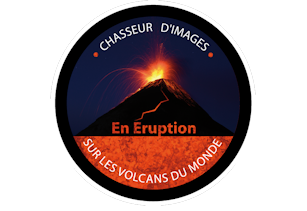
VOLCANO EXPEDITIONS
Le Vanuatu, in the shape of « Wye » named "Greek I", which is also named officially the Republic of Vanuatu (French: République de Vanuatu, Bislama: Ripablik blong Vanuatu), is a Pacific island nation located in the South Pacific Ocean. This volcanic archipelago is 1,750 kilometres (1,090 mi) east of northern Australia, 540 kilometres (340 mi) northeast of New Caledonia, east of New Guinea, southeast of the Solomon Islands, and west of Fiji.
Vanuatu was first inhabited by Melanesian people. The first Europeans to visit the islands were a Spanish expedition led by Portuguese navigator Fernandes de Queirós, who arrived on the largest island in 1606. Since the Portuguese and Spanish monarchies had been unified under the king of Spain in 1580 (following the vacancy of the Portuguese throne, which lasted for sixty years, until 1640, when the Portuguese monarchy was restored), Queirós claimed the archipelago for Spain, as part of the colonial Spanish East Indies, and named it La Austrialia del Espíritu Santo.
Europeans did not return until 1768, when Louis Antoine de Bougainville rediscovered the islands on 22 May, naming them the Great Cyclades. In 1774, Captain Cook named the islands the New Hebrides
In the 1880s, France and the United Kingdom claimed parts of the archipelago, and in 1906, they agreed on a framework for jointly managing the archipelago as the New Hebrides through an Anglo–French condominium. An independence movement arose in the 1970s, and the Republic of Vanuatu was founded in 1980.
GEOLOGY OF VANUATU
The Vanuatu archipelago in the South Pacific is not only one of the most unspoilt and intact places of the earth, but also hosts some of the most spectacular volcanoes.
The Vanuatu archipelago contains many active volcanoes including Ambae, Gaua, Ambrym (Marum and Benbow), Lopevi, and Yasur, the Stromboli counterpart of the Mediterranean. Vanuatu's island arc is the result of a north-south subduction zone streching from the Matthew and Hunter islands in the south to Tinakula volcano in the Solomon Islands in the north.
Its friendly inhabitants are strongly rooted in their extotic traditional culture and welcome visitors warmheartedly as almost nowhere else. Vanutatu's tropical islands are not only the perfect location for a relaxing tropical holiday, but also offer the possibility for adventurous expeditions to some of the most active and spectacular volcanoes of the world, including the frequently active lava lakes of Ambrym and the famous, constantly erupting volcano Yasur on the Island of Tanna.
 Français
Français English
English